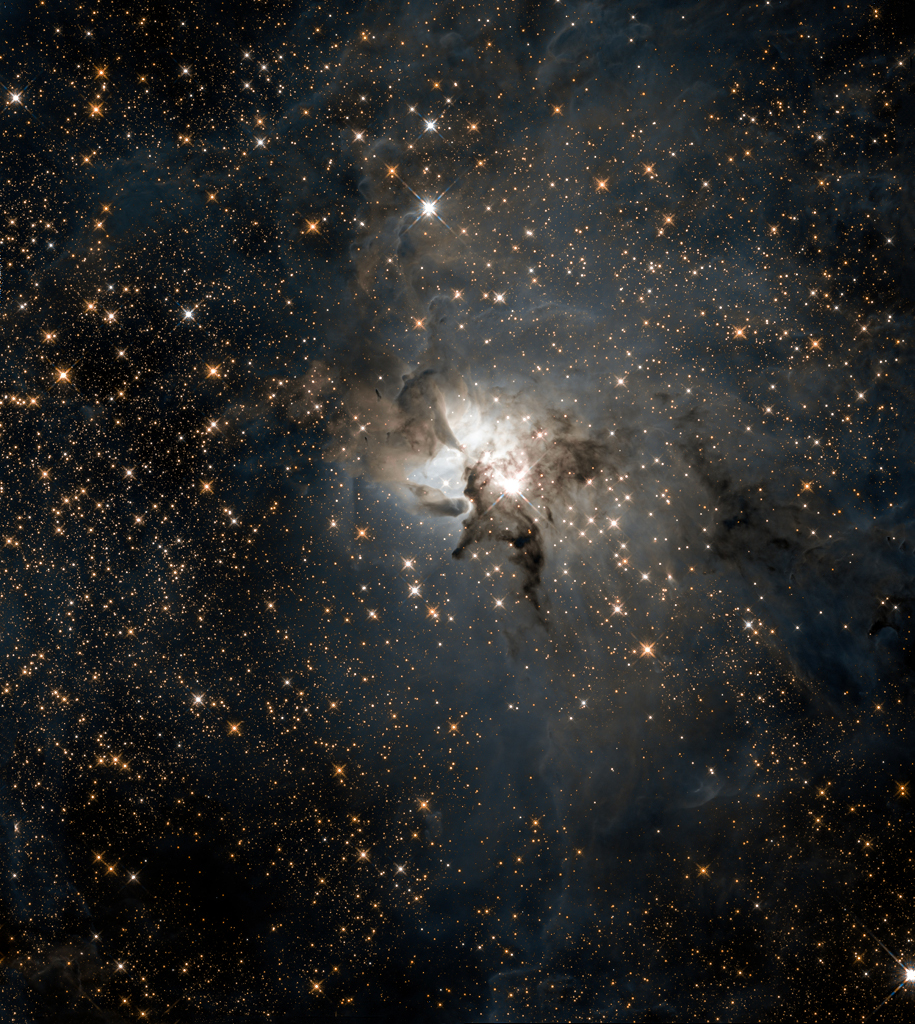2021年03月19日
Central Lagoon in Infrared
Image Credit & License: NASA, ESA, Hubble; Data Archive: MAST, Processing: Alexandra Nachman
Explanation: Stars fill this infrared view, spanning 4 light-years across the center of the Lagoon Nebula. Visible light images show the glowing gas and obscuring dust clouds that dominate the scene. But this infrared image, constructed from Hubble Space Telescope data, peers closer to the heart of the active star-forming region revealing newborn stars scattered within, against a crowded field of background stars toward the center of our Milky Way galaxy. This tumultuous stellar nursery’s central regions are sculpted and energized by the massive, young Herschel 36, seen as the bright star near center in the field of view. Herschel 36 is actually a multiple system of massive stars. At over 30 times the mass of the Sun and less than 1 million years old, the most massive star in the system should live to a stellar old age of 5 million years. Compare that to the almost 5 billion year old Sun which will evolve into a red giant in only another 5 billion years or so. The Lagoon Nebula, also known as M8, lies about 4,000 light-years away within the boundaries of the constellation Sagittarius.
Tomorrow’s picture: light-weekend
礁湖星云中心区的红外光影像
影像提供与授权: NASA, ESA, Hubble; Data Archive: MAST, 影像处理: Alexandra Nachman
说明: 在这幅横跨礁湖星云中心宽约4光年区域的红外光影像里,到处都是恒星。相较之下,在一般的可见光影像里,这片星野主要的景观是辉光云气和不透光的尘埃云。不过,建构自哈伯太空望远镜数据的这幅红外光影像,却能过透视活跃恒星形成区的中心,因而得以呈现散布在其内的新恒星,以及后方位在我们银河中心方向的密密麻麻背景恒星。这个混乱恒星育婴室的中心区,则是受到大质量年轻的赫歇尔36星之雕塑与激发,而在这片视野里,它是中心附近的那颗亮星。赫歇尔36星其实是一个由数颗大质量恒星成组的多星系统。在其内,稚龄不到1百万年、但质量有30多倍太阳的最大质量成员星,其预期寿命只有5百万年上下。相较之下,我们的太阳已是50亿年熟龄,而且要再过50亿年,才会演化成红巨星。亦名为M8的礁湖星云,位在人马座方向约4,000光年远之处。
明日的图片: light-weekend







